December brings shopping madness, holiday cheer, snow (at least where I grew up in New York), and, in San Carlos, new trash rates. I suppose that’s a little karmic, since the holiday season generates a lot of trash and recycling, at least in our home.
This year the Council is looking at increasing rates by up to 12% overall. Rates for individual service categories and/or can sizes could go up more or less than that amount, but our total costs are expected to be about 12% higher in 2013 then they were in 2012, and have to be covered somehow.
In this post I’ll try to explain what’s causing this increase. Fair warning: this is a complex topic, so I’ve summarized or glossed over some details. And I’m still actively researching it, so things are subject to change (but hopefully not too much).
So, why are costs going up so much?
The Players, Some Terminology and Some History
Before we dive in, it’s important to understand who the players are. Recology is the service provider (I sometimes refer to them as the “operator”) under a contract with the City of San Carlos. Recology takes all the materials to a transfer station operated by the South Bayside Waste Management Authority (SBWMA). The transfer station happens to be located in San Carlos, east of US-101 and north of Holly Street.
SBWMA has several contracts for disposing of the trash, compostable materials and recyclables. The recycling operation produces some income, which is used to offset the costs of SBWMA’s operations. Our trash fees pay for our share of both Recology’s and SBWMA’s costs, net of income generated from the sale of recycled materials.
SBWMA is jointly owned and operated by a consortium of public agencies, including San Carlos. There’s a map showing the agencies on the SBWMA website.
In the trash business, the collected material falls into one of three categories:
- Solid: the stuff that goes in the black cans;
- Organics: the stuff that goes in the green cans; and,
- Recyclables: the stuff that goes in the blue cans.
Currently, the City only charges based on the number and size of black cans picked up. There is no charge for picking up blue or green cans. The cost of picking up the blue and green cans is factored into the cost of picking up the black cans.
The Service Provider Contract
San Carlos, along with all the other SBWMA member agencies, significantly changed the nature of its service provider contract back in 2009. Previously, trash and recycling collection was paid for on a cost plus profit basis. This gave rise to some pretty significant rate increases, because there was little or no incentive for operators to hold down costs. In addition, operators would routinely pick up material from “customers” who lived in a community but were not on the operator’s customer rolls. These “invisible customers” created an issue after the changeover because they weren’t factored into the contract bids.
The new contract model defines an “allowable charge” for the service provider, which can only increase from year to year based on the contract terms. In general, the caps are defined by Federal inflation indices for the Bay area. The “allowable charge” creates an incentive for the operator to maximize efficiency. If they operate for less than the “allowable charge” they keep the difference. If they spend more, they eat it.
But up until 2013, when the current labor contract expires, the labor cost cap is defined by the last labor contract negotiated by Allied Waste, the previous operator. Because Allied already knew it had lost the trash hauling contract when those negotiations took place, they had no incentive to bargain well. The result was a labor contract which contained annual wage & benefit increases averaging 5.4% per year. It expires in October, 2013. At that point the labor cost cap will also be based on a Federal inflation index for the Bay area.
The Big Picture
Here’s how the 12% breaks down by cost driver:
[singlepic id=17 w=600]
The biggest single contributor is costs deferred from prior years. They’re 2.6 points of the increase, or just over one-fifth of the total. They have an interesting history.
Trash collection in the SBWMA arena isn’t a cash and carry business. Member agencies ultimately have to collect enough money from residents and businesses to pay the fees, but for years communities have been allowed to defer part of what they owe. The service operator extended credit to cover the difference, and charged interest on the amount of the loan.
When the prior operator, Allied Waste, lost the contract they naturally wanted those loans to be repaid. This led to some significant rate hikes in 2010 among the member agencies to fund the repayment. Communities had kept trash rates lower than they needed to be for years, and then had to make up the difference. Many agencies, including San Carlos, deferred a portion of that repayment again with the new operator, Recology. They figured on finishing the repayment when rate increases moderated. Only the surprise appearance of those “invisible customers” led to an unexpected cost increase under the new contract. That surprise offset almost all of the anticipated drop in rate increases.
The “repayment bubble” does seem to be winding down. Hopefully that means future rate increases will be smaller. But it’s important to remember surprises — “invisible customers”, war in the Middle East boosting fuel costs — can erase any such possibility. It’s best not to count your chickens before they hatch.
That’s why I’m glad today’s Council is coming around to the notion we should avoid trying to smooth rate increases. I lobbied strongly for that approach during our discussion about trash rate increases back in October. It’s more important to manage costs than it is to smooth them out because you can never completely know what the future holds.
Route Hours
The next biggest contributor stems from San Carlos’ larger expected share of route hours in 2013 than 2012. A route hour is an hour a truck spends on the road, and is a measure of how much time Recology is spending picking up trash.
The good news is that Recology spent 7.5% fewer route hours in San Carlos during 2012 than in 2011 (the 2012 figure drives the 2013 rates, while the 2011 drove the 2012 rates). However, Recology spent 15.4% fewer hours collecting trash from the other SBWMA communities.
Why does what happens in other communities affect us? Because the operator’s billings are set by allocating an “allowable charge” among the participating communities. Using a bigger share of route hours, even if you’re using less than last year, means you have to pay more of the allowable charge. In 2013, consuming a bigger piece of pie adds 2.5 points to San Carlos’ rate increase, about a fifth of the total.
Why Are We Getting a Bigger Piece of Pie?
So what caused the allocation shift? There are a number of ways to explain it, but the one I think is most intuitive looks at what I call “excess route hours”. Here’s what that means.
Imagine the route hours in San Carlos changed by exactly the same percentage as in the average of all the other communities serviced by Recology. In that case there would be no allocation shift, because San Carlos’ portion of the allocation pool would be unchanged. The total number of hours might change, but our relative share, our “slice of the pie” would be the same.
If we compare that calculated number of hours to the actual number of hours used in San Carlos we can see whether our community is using more or less hours than would be needed to keep our share unchanged. If we show an excess of hours we know we’re going to absorb a bigger share of the pie. With a shortfall or deficit we’d absorb less.
Let’s walk through this for 2012. Remember, changes from 2011 to 2012 drive the 2013 rates, which are what we’re analyzing:
| Route Hours | San Carlos | Other Communities | Total | San Carlos, % of Total | |
| 2011 Actual Hours | 22,166 | 232,617 | 254,783 | 8.7% | |
| 2012 Actual Hours | 20,507 | 196,623 | 217,130 | 9.4% | |
| % Change 2012 vs 2011 | -15.5% | ||||
| 2012 if San Carlos Changed by -15.5% | 18,736 | 196,623 | 215,359 | 8.7% | |
| Excess 2012 San Carlos Route Hours | 1,771 | ||||
This shows that San Carlos needed to use 1,771 fewer route hours in 2012 than it actually did in order to not pick up a bigger slice of the “allowable charge”.
What’s Driving Excess Route Hours?
Using the excess route hours concept we can analyze what caused the excess. Let’s first look at the three types of customers tracked by Recology:
[singlepic id=15 w=500]
As you can see, 78% of the excess came from the City’s operations (e.g., parks, sidewalks, offices, public events) and single family homes. We can dig deeper and see what types of trash pickup in each of the segments is driving the excess:
[singlepic id=12 w=700]
Three items — single family organics, multi-family & commercial recycling, and City venue & events — explain 1,540 (87%) of the excess route hours, and hence most of why our share of the “allowable charges” went up. What drove those excesses?
- San Carlos started weekly residential organics recycling in 2009 – two years before most of the other SBWMA member communities. Not surprisingly that has led to San Carlos diverting significantly more organic material than those other communities.
- San Carlos adopted an ordinance requiring commercial recycling. This was done in part as a result of community values, and in part because the State had made it clear they were moving to require every community in California to do so. However, at the last minute, Sacramento softened the regulations, allowing communities to opt out of requiring commercial recycling. Recology’s other customers have yet to adopt significant commercial recycling ordinances.
It’s unclear what’s driving the increase in our Venues & Events route hours. Apparently, SBWMA changed the way it allocated the hours spent collecting material from venues & events after complaints from another community. So some or all of the increase may be a “one time” adjustment. However, that begs the question about why the allocation was changed and, more importantly, why route hours are being allocated to an activity. Route hours are, as I understand them, tracked on a truck-by-truck basis as they go about their business. Which means there’s no reason to allocate anything; it should all be simply a matter of record. Staff is currently looking into this. I’ll update you on what is learned.
This chart tells us we could have significantly reduced next year’s rate increase if we had scaled back or abandoned residential composting and commercial recycling. But do we want to do that?
Personally, I don’t. I’m willing to pay the price — in terms of bigger rate increases than other communities — for keeping those programs. Your mileage may vary, of course. However, I do plan on asking staff to consider ways to make those programs more efficient, from a route hours perspective. There’s nothing wrong with striving for efficiency.
Service Provider Costs
The next 4.8 points of the increase reflect cost increases in Recology’s operations. The three biggest items, making up 4.4 points, are labor costs (e.g. wages for drivers), fuel costs and a performance incentive payment. None of these strike me as unreasonable. I doubt the increased fuel cost piece (1.3 points) will come as a surprise to anyone who has bought gasoline in the last year.
The labor cost increase (2.3 points), while higher than what some people have experienced in terms of their own compensation and better than what we were able to give our own staff, isn’t wildly out of line. More importantly, that labor cost increase stems from a contract which was probably not as well negotiated, by the prior operator, as it should have been — and that contract is expiring next year. The indexed cost caps will then be in full force and effect. That is expected to hold down future cost increases, by creating an incentive for the operator to maximize efficiency.
The performance incentive payment (0.8 points) is a result of Recology exceeding performance metrics for things like handling customer service calls, making pickups on time, etc. Is the extra payment worth the better service we’ve gotten? That’s a fair question, but once we’ve defined the rules in the contract we need to abide by them. I know from talking to folks that while Recology isn’t perfect, they’re doing a much better job than their predecessor, Allied Waste. That’s worth something.
One Time Adjustments
These make up 1.9 points of the 12 point increase we’re facing. They include a change in the way SBWMA allocates its facility costs among the member agencies. Changing allocation rules is generally a pointless game (how much time have many of us wasted fighting interdepartmental expense allocations at our jobs when we should have been out making money for the company, and ourselves?). But they’re inevitable when you’re sharing costs between multiple public agencies. Everyone has a reasonable argument about why they should be charged less than they were! So these kinds of things happen from time to time. The key metric is that they shouldn’t happen very often.
The public school adjustment last year came about because the previous operator, Allied Waste, had been giving school districts a special reduced rate. The member agencies weren’t aware of this. When Recology asked whether the discount should be continued, the member agencies declined to do so. This resulted in a one-time recovery of previous discounts during 2011, which lowered the rate increase for 2012. Since it didn’t repeat in 2012, costs are going up, in our case by 0.7 points.
Looking Back
Let’s summarize these cost drivers in a different way, by “who was responsible” for them. If you do that you end up with a picture that looks like this:
[singlepic id=16 w=500]
Forty-three percent of the increase is the result of local decisions (i.e., we chose to keep rate increases below cost increases in the past, and we wanted to pursue certain programs more aggressively than our neighbors). Another sixteen percent is due to one-time adjustments. The remaining forty-one percent is due to costs going up at Recology. It’s all dollars out of our pockets, of course. But now we have a better grasp on what we would need to do to effect change. And, as I mentioned when talking about San Carlos’ excess route hours, in some situations we may simply want to accept the increase as the price of expressing our community values (e.g., more aggressive recycling and composting).
Subsidies
There’s one remaining issue to discuss that could impact next year’s rates. It has to do with our free recycling program.
To encourage recycling, many years ago we adopted a philosophy of charging less for picking up a small black can than it costs, and charging more for picking up a large black can than it costs. In and of itself there’s nothing wrong with that. It’s another value choice made by our community (State law also mandates increased recycling).
But because we don’t charge for picking up the blue or green cans, the less trash we put out and the more recycling we do, the less money we take in to pay the Recology bill. They, after all, incur costs for every can they pick up, regardless of whether or not we turn around and charge residents for the pickup.
The end result of all of this is an acceleration of the rates for picking up regular trash. Imagine a world where every household in San Carlos — with one exception (let’s make it my house) — managed to recycle everything they disposed of (e.g., by being very clever in what they bought, how it was packaged, etc). I’d be the only person in town paying a trash fee. And what a fee it would be!
At some point we need to revisit the basic model of encouraging recycling by not charging for it, and also subsidizing the smaller-sized black cans. The Council has asked staff to schedule exactly that discussion before we start the process for setting 2014’s rates.
For 2013, the Council may decide to begin phasing out the small black can subsidy. We can’t change the “no charge for blue or green cans” policy because that wasn’t contemplated in the rate increase notice circulated a few weeks ago. The issue will be that reducing the subsidy necessarily means the trash rate for small cans will go up by more than 12%. As you can imagine, that’s a sensitive subject.
Final Thoughts… for Now
Among the items I’ve glossed over here are my reactions to the new service provider contract model adopted by SBWMA several years ago. Don’t get me wrong. It’s a significant improvement over the “cost plus” model previously used.
But my gut tells me there are other, even stronger, ways it could be structured to hold down costs, or at least make them more predictable. While inflation-indexed caps are better than no caps, few organizations today get to pass through inflation, automatically, to their customers. Perhaps it might be better for SBWMA members if the contract was put out to bid on a defined price basis: you pay $x per ton of material collected, perhaps differentiated by type (e.g., organics). Perhaps the rate is defined in the bid to escalate over time.
Such an approach would create an even stronger incentive for the operator to be efficient. It would also push the risk of managing things like higher fuel costs onto the operator, who is presumably better positioned to do that than cities like San Carlos.
It wouldn’t be a panacea, because the customers (e.g., San Carlos) ultimately have to pay both the costs and the cost of the operator managing the risk. But it might be a better deal overall, in terms of both the trash rate and the predictability/stability of the trash rate, than what we have today.
So stay tuned, there’s a lot more trash talking ahead of us.
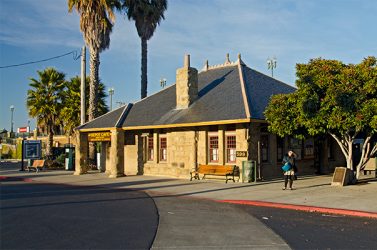
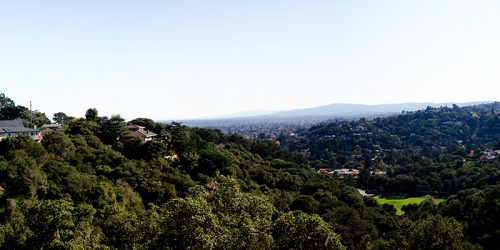
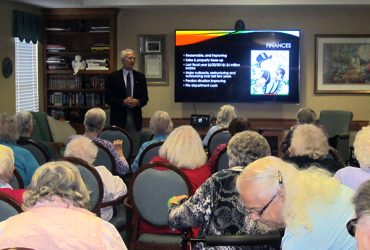

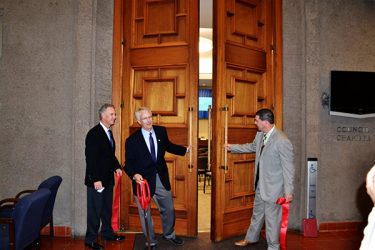



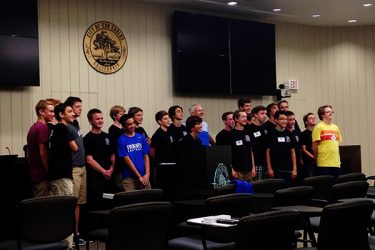
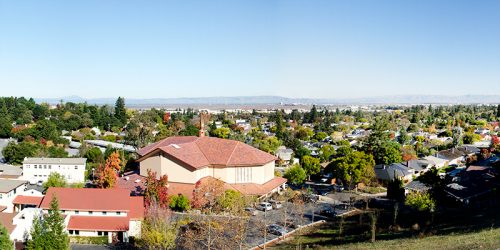

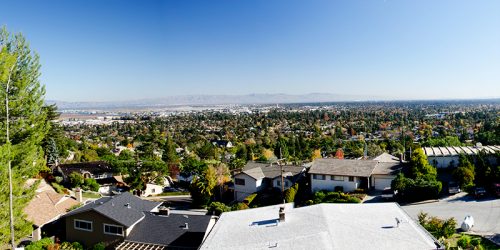
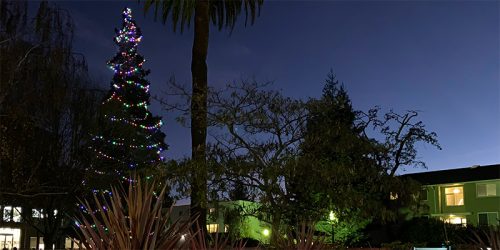
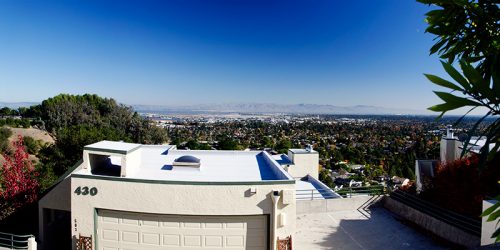
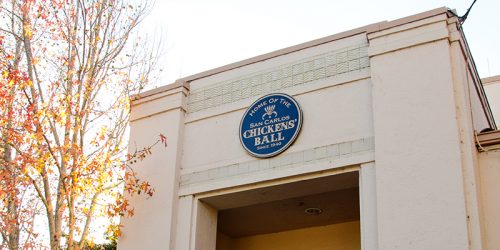






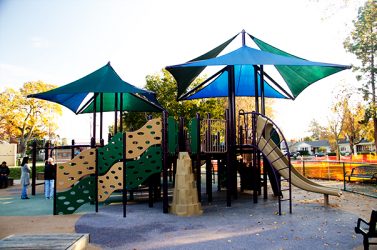




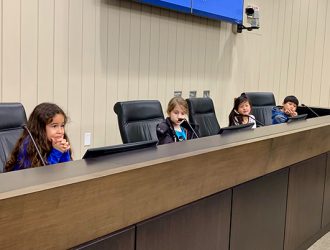
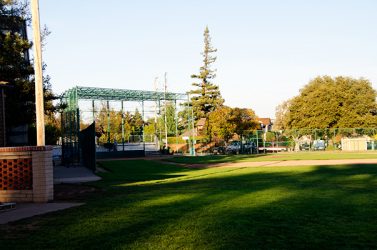

4 thoughts on “Trash Talk”
Thank you for explaining garbage collection and the proposed rate increases for 2013.
Rates for waste pick up should remain low for those who recycle and be increased proportionally across the board, including for those who choose not to recycle.
The only things that belong in the black trash bins include plastic wraps, black plastics, planting pots, cat litter, styrofoam, lined containers and vacuum refuse. Other than the week of Christmas with the increase in stryrofoam packaging, people who recycle will find themselves unable to fill a 13-gallon kitchen bag, much less the 20 gallon trash can (or 96 gallon bin!!!) in a 7-day period. As a household of recyclers, a bi-weekly or even monthly pickup would suffice for our black can.
I realize that the main cost of the program is labor and machinery, and not the cost of waste. However, to reduce waste and costs in the long run, we need to encourage recycling now. Rates should be proportional to the costs of disposing of waste and NOT to the costs associated with collecting waste, compost and recycling. A house-hold disposing of 20 gallons of trash per week should be paying 21% as much as someone filling a 96 gallon container. (Fees should be proportional to waste, rather than actual cost, because if everyone reduced waste, we could likely get a more affordable refuse program city wide, which is currently unavailable)
If we successfully improve reducing, reusing and recycling, we could, as a city, move back to bi-weekly pickups.
As it stands with the suggested rate increases, I am fully aware that a rate increase is necessary, and I do support a COLA increase across the board. However, there should be no special privilege for those who are already too privileged to recycle. I urge you to go with option #1. Under no conditions, should those who choose to consume 64 or 96 gallons of waste in a week be rewarded with no rate increase.
Thanks for chiming in, Estelle.
The challenge with focusing only on the cost of disposing of waste is that’s not the only cost being incurred. In fact, the actual disposal costs are a fraction of the cost of collecting and transporting waste. Encouraging people to put out less waste is a good thing, for many reasons, but it doesn’t make a significant impact on cost (i.e., the difference in cost between collecting waste out of a half-filled 20 gallon can and a filled 96 gallon can is not that great).
That’s why last night I suggested that what’s needed are ways to change the way we collect trash (and recycling, for that matter). State law requires us to pick up garbage and compostable materials every week, but not recycling. Why not pick up recycling less frequently for those who don’t fill up their blue can every week? For that matter, why not let neighbors share a single garbage or composting can? Those kinds of steps would reduce costs, and create an opportunity to moderate rate increases, or maybe even lower rates.
BTW, recycling is going strong in San Carlos. Households currently divert over 70% of their waste into the recycling stream. That’s because we live in a pretty environmentally-conscious community and we’ve made it pretty easy to recycle. I suspect we’re at or near the point where we need to start thinking about how to encourage households to generate less “stuff going to the curb”, of all kinds (i.e., recycling or trash). Besides being even better for the environment, as I pointed out in my post there are some painful traps awaiting us because we currently don’t charge for picking up recycling or organic waste, even though there are significant costs associated with doing so. Those costs have to be covered somehow, regardless of what incentives or disincentives we put in place to divert material from the landfill.
– Mark
Thanks for this in-depth information, Mark.
I definitely think we want to continue subsidizing the behavior to reduce trash, but it seems like it has been such a successful program that we need to revisit the how rather than the if. Perhaps a flat (I’ll use the word “small” here but leave the specific numbers for another day) fee for every customer to have recycling and organic matter collection, and continue to have a subsidized escalating scale for trash collection. I think a progressive community needs to continue to nudge behaviors that we desire.
As a manner of reducing the number of hours that Recology trucks spend on our roads, I’d like to suggest that we try to severely limit the amount of backtracking that the trucks seem to do on our residential roads. Specifically, is it really necessary for every truck to travel up AND down every small street in our city? Why not have all of the collections on one side of the street on our non-arterial roads rather than both sides? I don’t think it’s too much to ask for half of our residents to take their bins across the road rather than just to the curb. This would have the dual benefit of reducing hours AND fuel consumption.
-Jason
I suspect something like what you propose, fee-wise, is where we’ll end up, Jason. Although personally I’d prefer to make it a surcharge for larger cans, because that preserves the cost signaling on the smaller can end of the spectrum.
Thanks for the suggestion on doing a single pass approach. It wouldn’t work on all streets, but could work on many/most. I’ll look into it.
– Mark